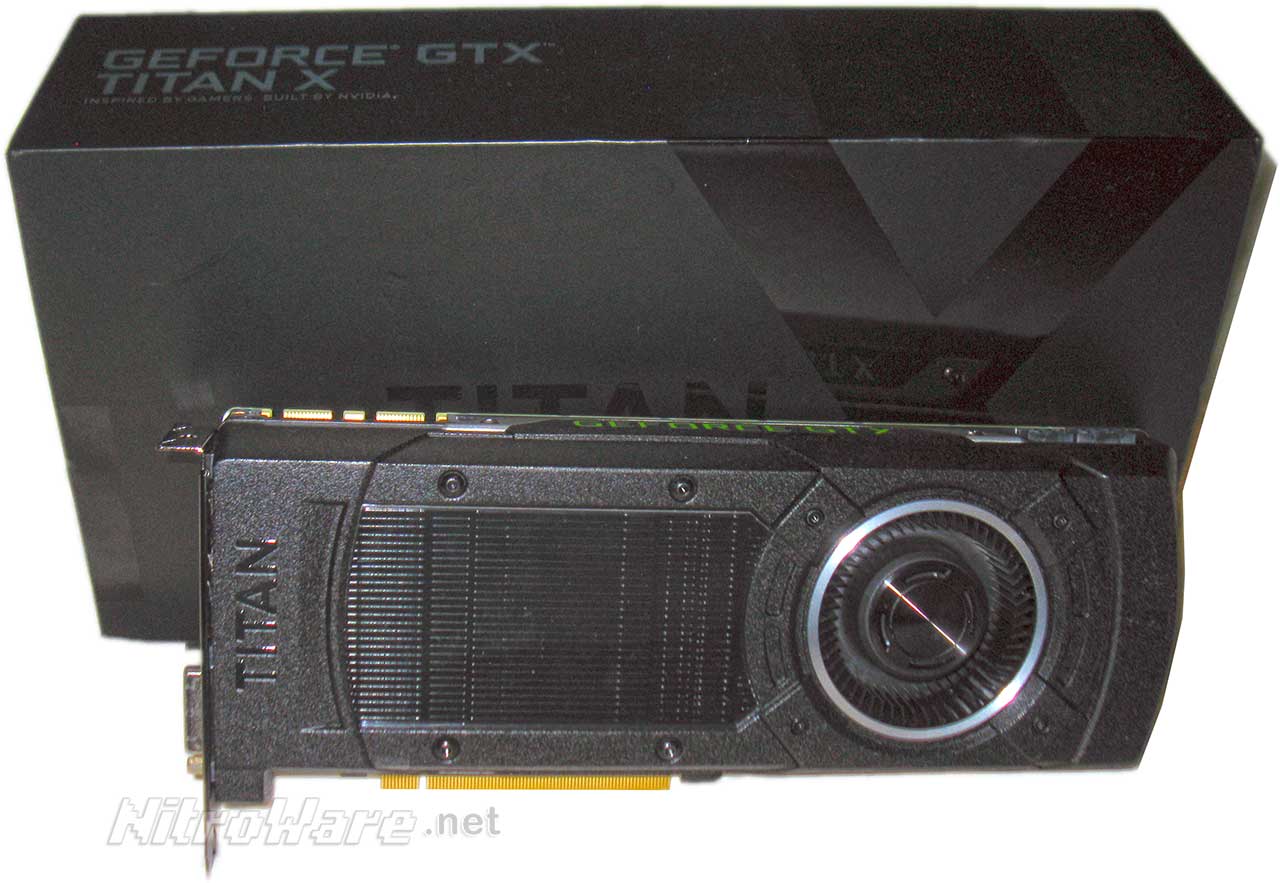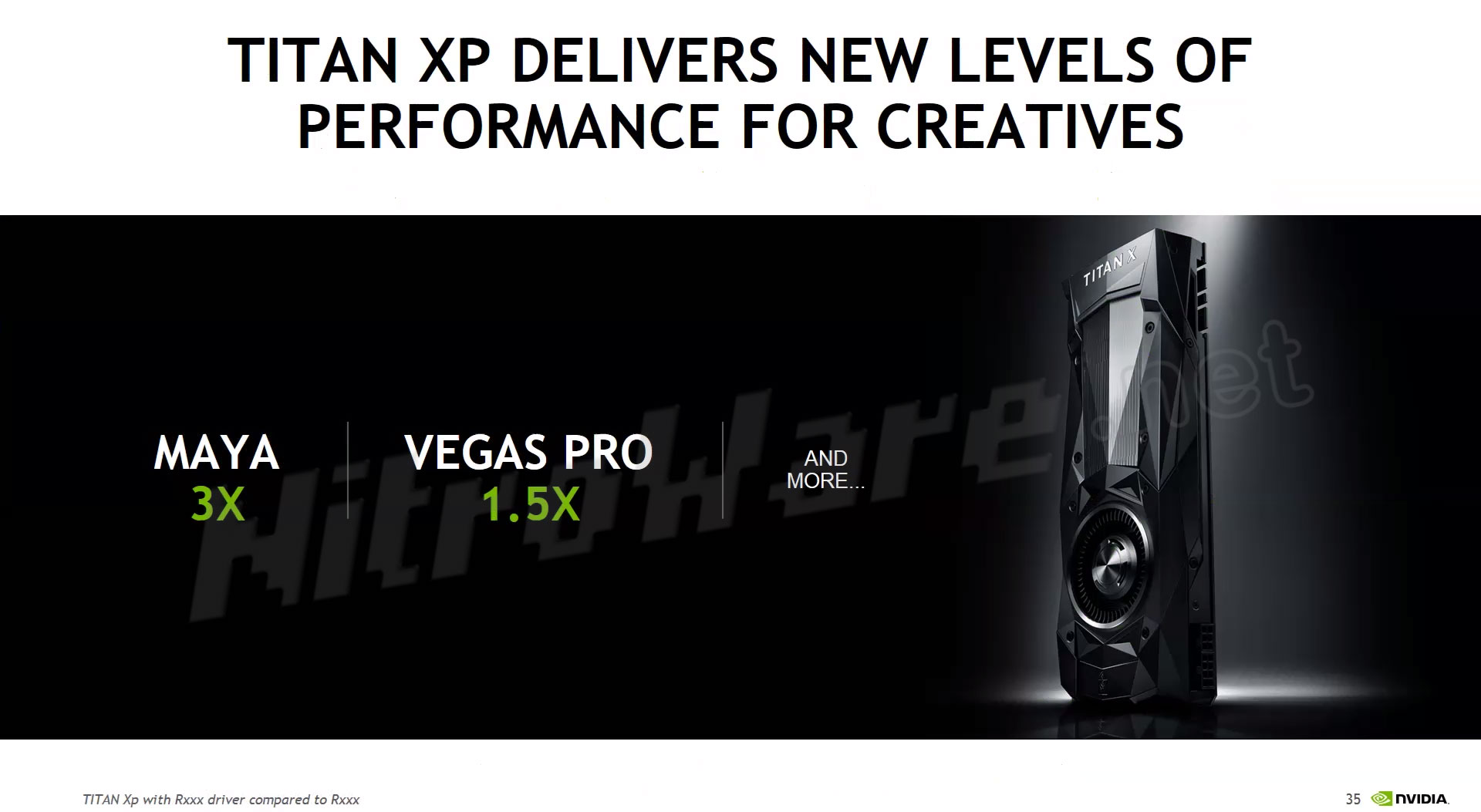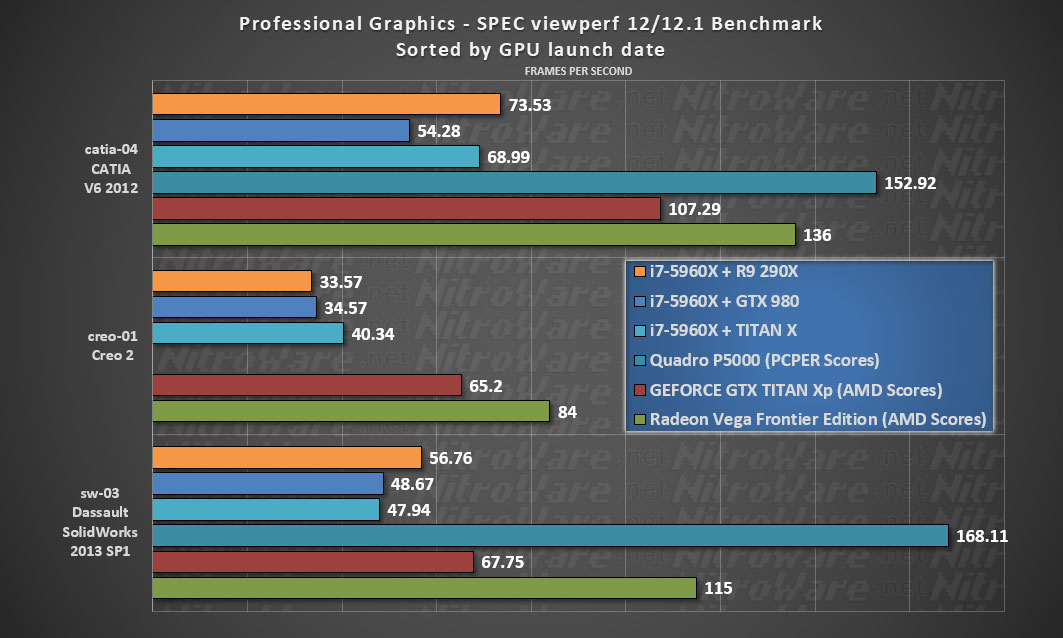- Huawei P30 Hands-On
- Crucial MX500 1TB SATA Solid State Drive Review
- Intel’s flawed ‘Rangeley’ Atom C2000 processors are still a ticking time bomb
- Eric Broockman Extreme Networks CTO Interview
- Introducing the D-Link COBRA AC5300 Wave 2 MU-MIMO Wi-Fi Modem Router and Triple Band Wi-Fi explained
- VICHYPER - Australian Hyperloop Interview and Tour
- Kaspersky Keynote and Press Conference - Sydney 2017
- ZOTAC NVIDIA GeForce GTX 1050 Australian Review
- Intel Core i7 Extreme Edition (Codename: Broadwell-E) Processor Australian Review
- ASUS ROG GX700 Liquid Cooled Gaming Laptop Video Preview and Analysis.
- Video Tour - NitroWare experiences HP's new Australian Customer Experience Centre and Intel 6th Gen ‘Skylake’ PCs
- Bose SoundTouch 2015 Wireless Speaker Preview
- NVIDIA GeForce Experience Quarter 4 2015 Update Analysis
- NVIDIA GEFORCE GTX 980 Ti Australian Review - TITANic graphics performance for US $649
- HP Zvr 23.6-inch Virtual Reality Display First Look
- NVIDIA GeForce GTX TITAN X Video Card Australian Review
- Battlefield Hardline - Developer Q&A with Visceral Games
- The NVIDIA GEFORCE GTX 960 REVIEW - EVGA SSC Edition
- NVIDIA'S GEFORCE GTX 980 Apollo 11 Lunar Landing Tech Demo tested
- Monster Cable Premium Black 27.7 Gbps high bandwidth HDMI 2.0 cable test
- 4th Gen Intel Core "Devil's Canyon" Processor Family Preview
- Seagate Business 4-Bay 16TB NAS Review
- MSI Radeon R9 270X HAWK & GeForce GTX 760 HAWK Video Card Review
- Adobe Photoshop CC and AMD Radeon GPU Smart Sharpen Benchmark using OpenCL
- AMD Radeon R9 290X Video Card Review and Analysis
- Never Settle: Forever game bundle: What you need to know and what AMD could have done differently.
- Intel 4th Gen 'Haswell' real world gaming performance
- An Evening with Battlefield 4
- Intel 4th Gen Core i7-4770K 'Haswell' CPU Performance Review
- Our experience with AMD's Never Settle Reloaded game bundle - Trouble with Ubisoft Uplay | Updated
- Crucial MX500 1TB SATA Solid State Drive Review
- ZOTAC NVIDIA GeForce GTX 1050 Australian Review
- Intel Core i7 Extreme Edition (Codename: Broadwell-E) Processor Australian Review
- NVIDIA GEFORCE GTX 980 Ti Australian Review - TITANic graphics performance for US $649
- NVIDIA GeForce GTX TITAN X Video Card Australian Review
- The NVIDIA GEFORCE GTX 960 REVIEW - EVGA SSC Edition
- NVIDIA'S GEFORCE GTX 980 Apollo 11 Lunar Landing Tech Demo tested
- Monster Cable Premium Black 27.7 Gbps high bandwidth HDMI 2.0 cable test
- Seagate Business 4-Bay 16TB NAS Review
- MSI Radeon R9 270X HAWK & GeForce GTX 760 HAWK Video Card Review
- Adobe Photoshop CC and AMD Radeon GPU Smart Sharpen Benchmark using OpenCL
- AMD Radeon R9 290X Video Card Review and Analysis
- Intel 4th Gen 'Haswell' real world gaming performance
- Intel 4th Gen Core i7-4770K 'Haswell' CPU Performance Review
- Our experience with AMD's Never Settle Reloaded game bundle - Trouble with Ubisoft Uplay | Updated
- Huawei P30 Hands-On
- Introducing the D-Link COBRA AC5300 Wave 2 MU-MIMO Wi-Fi Modem Router and Triple Band Wi-Fi explained
- ASUS ROG GX700 Liquid Cooled Gaming Laptop Video Preview and Analysis.
- NVIDIA GeForce Experience Quarter 4 2015 Update Analysis
- HP Zvr 23.6-inch Virtual Reality Display First Look
- 4th Gen Intel Core "Devil's Canyon" Processor Family Preview
- Intel 4th Gen Core Haswell CPU and Graphics Preview - See the future of PC graphics through Intel's Iris.
- Cooler Master's Trigger keyboard might just be the perfect gamers keyboard
- ZOTAC "Inner-Beauty" Small Form Factor PC Preview featuring Z77-ITX WiFI and GeForce GTX 680 AMP! Edition
- Intel Desktop Board DX79TO Preview | Sandy Bridge-E performance on a budget
- Gigabyte GZ-X1 Mid Tower ATX Computer Case Preview
- Telstra Turbo 7 Series 3G Wireless Gateway - First Impressions
- Lian-Li Tyr PC-X2000 HTPC/Gaming Chassis Preview
- Intel’s flawed ‘Rangeley’ Atom C2000 processors are still a ticking time bomb
- Never Settle: Forever game bundle: What you need to know and what AMD could have done differently.
- Price Gouging – Australians pay up to twice as much for Microsoft Windows 7 Anytime Upgrade but not for Windows 8 than the US
- Intel CPU Protection Plan for overclockers – Ploy or Promise ?
- Where did all my printer ink go? Part 2 - Epson
- Where did all my printer ink go? Part 1 - Brother
- How to install Windows Server 2008 R2 or Windows 7 using a LSI 3ware 9650SE RAID card
- Issues with Realtek High Definition Audio device driver for Windows XP
- The front audio ports on my PC do not work – why is this and how can I fix this?
- How to create a dedicated Voice over IP headset for your PC - for free. Part 2.
- How to create a dedicated Voice over IP headset for your PC - for free. Part 1.
- Computer motherboard buyer guide - ECS X48T-A
- Making the most of dual onboard Ethernet ports
- How to fix IEEE 1394 FireWire Networking in Windows XP SP3
- DivX 6.5 crashing fix
- Eric Broockman Extreme Networks CTO Interview
- VICHYPER - Australian Hyperloop Interview and Tour
- Kaspersky Keynote and Press Conference - Sydney 2017
- Video Tour - NitroWare experiences HP's new Australian Customer Experience Centre and Intel 6th Gen ‘Skylake’ PCs
- Bose SoundTouch 2015 Wireless Speaker Preview
- Battlefield Hardline - Developer Q&A with Visceral Games
- An Evening with Battlefield 4
- CeBIT Australia 2012 Preview
- Trick or Treat – we bring you tech candy, err the latest Intel X79 Motherboards and other goodies
- Netgear introduces fully open-source Wireless-N Gigabit Router | Cebit Australia 2009
- Exclusive - Altec-Lansing shows off new speakers for 2009 at CeBIT Australia
- CeBIT Australia 2008 | Mtron claims to have worlds fastest Solid State Drive
- Sennheiser @ CeBIT Australia 2008
- Plantronics and Altec Lansing @ CeBIT Australia 2008
- Panasonic @ CeBIT Australia 2008
News
- Details
- Written by: Dominic Sharoo
SIGGRAPH 2017: NVIDIA powers content creators.
In conjunction with their new “bringing AI to graphics” initiative which is tied to the introduction of their new AI optimised Volta based Tesla V100 GPUs, NVIDIA will deliver a new driver to bring Quadro like speed-ups for pro apps like Maya and Vegas targeted towards TITAN X and derived graphics cards.
With AMD recently clearly segmenting its graphic card line into gaming/enthusiast (Radeon RX), semi-professional (Radeon PRO) and HPC (Radeon Instinct) and eliminating the previous professional rendering FirePro brand line from the line-up, this has left NVIDIA and specifically its TITAN Sub brand in a dilemma. The industry has been waiting for NVIDIA to react and rectify the situation and as of SIGGRAPH 2017 conference, the GPU vendor apparently has, though future testing will confirm.
As enthusiasts may already know, the original ‘Kepler’ Based TITAN boards offered hardware support for dual precision (64-bit) floating point calculations, as well their native higher performance via clocks, memory bandwidth and total memory capacity. As additional TITAN models were released on newer generation GPUs such as Maxwell and Pascal, these hardware benefits were mainly lost leaving only clocks and memory size.
Releases of Ti (Titanium) edition GEFORCE cards such as 980 Ti and 1080 Ti typically challenged the existence of these TITAN boards, not to mention the branding cluster-f* the last few TITAN boards have had (TITAN X, TITAN XP but not really a p and finally TITAN Xp...)
NVIDIA has always carefully tried to keep the GEFORCE/TITAN line-up separate to QUADRO against some market forces, constantly insisting their more expensive, highly profitable and exclusive to purchase TITAN boards are meant for individuals who wish to do ‘deep learning’ and not gaming only. But again, these only offer the standard GEFORCE hardware feature set, the small minority who needed double precision could not use the TITAN boards.
Additionally, some display options such as 10-bit colour output, despite originally only supported on QUADRO were cascaded down to GEFORCE, and since Pascal, we have the new Half Precision 16-Bit Floating Point calculations support for specific AI loads which don’t need higher resolution.
Anyway, AMD’s introduction of a semi-professional tier of boards through their Radeon Pro, Duo (both on Polaris architecture) and Frontier Edition (Vega) boards offered the end user a choice of professional drivers and software plugins such as AMD's own accelerated “ProRender” for MAYA plugin.
AMD also endorsed benchmarks for these boards that emphasised professional and content creation apps, such as those measured using the SPECViewperf set of industry benchmarks including CATIA, MAYA, Solid works, Dassault and other packages. Rounding off the set is the more commonly used Premiere Pro, Vegas, Blender and Cinema4D renderers
In virtual response to AMD’s direction, we have been advised by NVIDIA that they will have a driver available at the end of this week to accelerate MAYA and VEGAS Pro ‘among others’ specifically targeted to the TITAN Xp flagship Pascal based card.

When NitroWare enquired with NVIDIA as if this content creation driver would be hard locked to TITAN Xp we were advised that no it would not be and GEFORCE may see a lower speed up, but the focus of the driver and it’s advertised speedups would be for TITAN X and Xp.
It was not confirmed to us whether the driver is specific to Pascal GPUs or it will support Maxwell also, given the original TITAN X was Maxwell.
1080 and 1080 Ti should see good speedups with content creation, there is no technical reason why they would not unless the nature of the driver has been miscommunicated to us.

Any other performance benefits and supported pro software was not advised at press time and will be released when the driver goes live later this or next week.
This driver is a great bonus for existing TITAN users who specifically purchased the board for more than gaming purposes as well as an incentive for potential purchases.
It also puts a dent into AMD’s VEGA Frontier Edition efforts. This driver should not serve as to cannibalise Quadro boards as they serve a slightly different market. They often have additional/different display outputs as well as ISV certification. Though some vendors such as Adobe and MAGIX (who purchased VEGAS from SONY) do support consumer cards now for OpenCL and CUDA acceleration. Just giving its prosumer users a boost in widely used Premiere Pro and Vegas alone, which are used by many vloggers, beginner and professional video producers alike is a nice bonus, let alone any speedups for those who do 3D rendering.
I applaud NVIDIA for doing the right thing by its users and taking an unconventional direction (by its own history). Of course, there will be some enthusiasts out there who will scream that this is just proof that the GEFORCE line was software crippled this whole time, well frankly I don’t give a damm. This was no secret and NVIDIA would admit this in certain terms.
Unless NVIDIA has already given this upcoming driver a name, what do we call it? We already have had Detonator (remember those?) then ForceWare and now Game-Ready. I call dibs on TITANIC drivers, though there is that slight sinking problem…
We will endeavour to deliver you benchmarks of the new driver focused on the GTX 1080 as we no longer have a TITAN board. I predict it will work just fine.
Subcategories
Affiliate News Article Count: 7
In addition to our own investigation, reporting and primary sources, NitroWare.net particpates in news exchange and syndication with other media outlets both independant and corporate.
Our staff screen these sources and publish worthwhile and relevant news items from other affiliated outlets in our Affiliate News Category.
We do not just provide a quotation and hyperlink to the news source but provide our readers of a summary and analysis of these news items.
Site News Article Count: 1
Site News comprises of newsworthy items of our own investigation or primary sources including
-
Annoucements from technology companies and vendors
-
Advance notice of interesting events such as expos, trade shows or launches.
-
Critical Hardware, Firmware or Software Updates
-
Recall notices or Technical Bulletins covering known issues
We do not just provide a quotation and hyperlink to the news source but provide our readers of a summary and analysis of these news items.